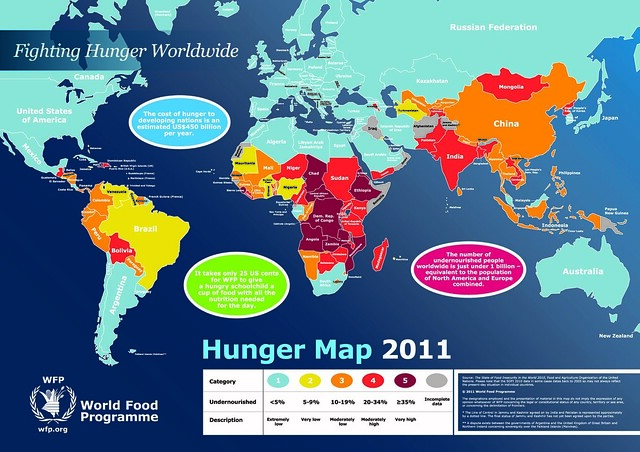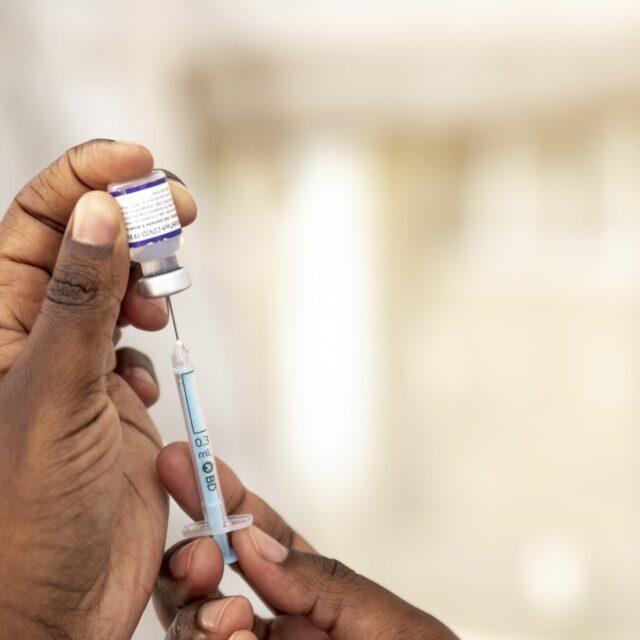On a continent where approximately two-thirds of its citizens rely on agriculture as the main source of their livelihood, where new technological advances have been introduced, and where there is enough food available to feed the whole population, why is it that more than two-thirds of the population are experiencing moderate to high levels of undernourishment?
An important piece of the puzzle is technology.
Many of the kinds of technologies that are being introduced to African farmers are high-tech solutions. These often are geared towards farmers in developed countries who farm on rich, irrigated soils and receive lots of institutional support to know what are the best technologies for their farms and how best to use them. Though, not all farms are equal. Often, these technologies have shown to be mis-matched for the capacities of small-holder farmers in Africa who lack access to appropriate types of soil, fertiliser, water, farm equipment, and the knowledge to make the best use out of these technologies. So what should be done?
Low-tech solutions that can be quickly implemented and easily used are part of the answer
For example, KickStart, a non-profit organisation that operates primarily within Kenya encouraging sustainable development through the use of technology among small-scale entrepreneurs, has developed human-powered irrigation pumps.
Weighing 4.5 kilograms, KickStart’s MoneyMaker Hip pump is operated by hand, can push water up more than 50 feet from a well or reservoir, and can irrigate an acre of land. By introducing a tool that costs $34, is highly portable and allows for more efficient irrigation, it not only increases how much a farmer can grow, but also, improves the quality of those crops. Since 1998, more than 115,000 pumps have been purchased, 77,000 small-scale enterprises have been created, and 380,000 people have been lifted out of poverty.
In addition to this, there are other exciting types of technology that have already been introduced in Africa that have facilitated agricultural production. For instance, the mobile phone revolution accounting for more than 500 million mobile phones being used in Africa has allowed farmers to obtain on-the-spot market prices, receive current weather updates, and seek technical advice. For example, the Market Linkages Initiative (MLI), a two year project implemented in seven East and Southern African countries and funded by USAID, was centred on improving food security and increasing income through better assimilation of smallholder farmers into national and regional markets. Through this project, MLI has trained more than 3,000 smallholder farmers in post-harvest techniques as well as integrated farmers and traders into an SMS mobile network, allowing farmers to obtain market prices and trading information.
Storage facilities, another low-tech investment, provide farmers with a dry place to hold their grains until they are ready to be sold in the market. This has a number of positive benefits: minimised post- harvest crop loss by lowering the risk of pest infestation which increases the marketable yield and allows farmers to sell when market prices are at their highest. For instance, the Purdue Improved Cowpea Storage (PICS) bags is a five-year project aimed at improving cowpea storage in West and Central Africa by offering farmers in ten different Africa countries sealed triple-layer sacks that prevent oxygen and pests from entering.
The International Maize and Wheat Improvement Centre (CIMMYT), a research centre that among many goals, aims to improve food security in sub-Saharan Africa through effective storage technologies have introduced airtight galvanized metal silos. Not only do these silos minimise post-harvest losses from exposure to air or pests, but CIMMYT also trains local artisans to craft the silos, increasing their monthly income.
So instead of just introducing technology for which the majority of African farmers don’t have the resources to implement, we here at ONE encourage expansion of long-term investment in low-tech solutions that can dramatically increase productivity, improve the quality of crops, and increase incomes for small-holder farmers.



